|
|
| |
| |
 |
Smart Building - Smart Grid - Smart City (3Smart) Newsletter December 2017
|
| |
|
 |
| With this “Merry”, the last newsletter of the year 2017, we would like to inform you about five pilot actions in different Danube region countries including buildings and grids with intersected management and, of course, wish you Merry Christmas and a successful year 2018. |
|
Project 3Smart builds on the knowledge and expertise of all partners by providing a technological and legislative setup for cross-spanning energy management of buildings, energy grids and major city infrastructures in the Danube region. This includes the development of a modular platform for coordinated building and distribution grid energy management. The developed platform will be installed on 5 pilot locations in 5 countries (Austria, Bosnia and Herzegovina, Croatia, Hungary and Slovenia), and comprehensive cost-benefit analysis will be performed to verify the platform performance.
In this newsletter we briefly introduce the 3Smart pilots.
|
|
| |
| |
AUSTRIAN PILOT
The 3Smart pilot in Austria consists of two buildings owned by the Municipality Strem – primary school and retirement and care centre, and also includes the local electricity distribution grid operated by Energy Güssing.
About the pilot host:
The municipality of Strem is located in the south-east of Austria directly on the border with Hungary. With its appr. 1.000 inhabitants Strem is a small rural municipality and member of the so-called ecoEnergyland. Strem is quite innovative and active in the field of renewable energies since more than 15 years. Due to this fact, Strem is also interested in different national and international projects and has participated in different initiatives in the past. Within 3Smart Strem will be responsible for the Austrian pilot activity and will focus on the building side energy management.
The municipality of Strem will use the project to move forward in solutions for building side management systems. In co-operation with EEE as well as Energy Güssing they will set up the pilot case in the selected buildings and will learn from other project regions.
Strem is not that experienced in transnational co-operation projects, but has done different national and regional energy related initiatives which will give them good experience in accomplishment of the assigned tasks.
|
| |
 |
| |
|
AT pilot state and plans:
STREM's primary school has a surface area of 500 m2 and is heated with radiators. In this building zone-level and central HVAC level will be introduced which requires digital control of radiators heating via controllable valves, measurements from calorimeters and each radiator’s return medium temperature measurement. On the central HVAC level temperature of the foregoing medium to radiators will be controlled. Heat for the building is supplied from the Strem’s heat distribution grid where the heat is produced via local biomass-based power plants.
STREM's residential retirement and care home has a surface area of 3.000 m2 where individual rooms are heated or cooled via floor heating/cooling system. The heat is supplied also from the Strem’s heat distribution grid while cooling is supplied from the chiller in the building. The building is already equipped with 170 kWp photovoltaic system. The existing digital controls of the individual rooms will be connected to the 3Smart EMS database and it will be possible to control from it the valves for floor heating/cooling of each room. Return medium temperature sensors will be added as well as calorimeters measurements in the supply ducts for the heating/cooling medium for the rooms. On the central HVAC level of the EMS supply medium temperature for the rooms will be controlled. On the microgrid level introduction of a controllable battery storage system is also planned.
Current status of the pilot execution and the foreseen timeline:
Following received electrical and mechanical installations project, the contractor was selected and the installations in the primary school are just about to be completed (by the end of 2017).
Planning of the installations for STREM's residential retirement and care home is finalized and the next step to be performed is the tendering procedure. Installations in the retirement and care centre are planned to be finished by June 2018 and the building-side EMS modules are to be introduced in the building as of July 2018. The introduction of grid-side EMS modules is also planned as of July 2018
|
|
| |
 PILOT IN BOSNIA AND HERZEGOVINA PILOT IN BOSNIA AND HERZEGOVINA |
|
|
The 3Smart pilot in Bosnia and Herzegovina consists of the building of JP Elektroprivreda hrvatske zajednice Herceg Bosne (EPHZHB) in Tomislavgrad and of the surrounding electricity grid operated by the same company.
About the pilot host:
EPHZHB is a public company and its core business is power generation, distribution and supply of electricity. Special attention of the company is put on the development and use of renewable energy sources, energy efficiency in production, distribution and consumption of electricity, then on the reduction of losses in the distribution network, and in particular on the management of energy and the development of smart grids. It is also very actively involved in defining national energy policy and other regulations, as well as in discussions with various decision-making bodies, in particular with regulators and other stakeholders. EPHZHB will gain very important practical experience in developing, deploying and monitoring energy management modules on the grid side.
|
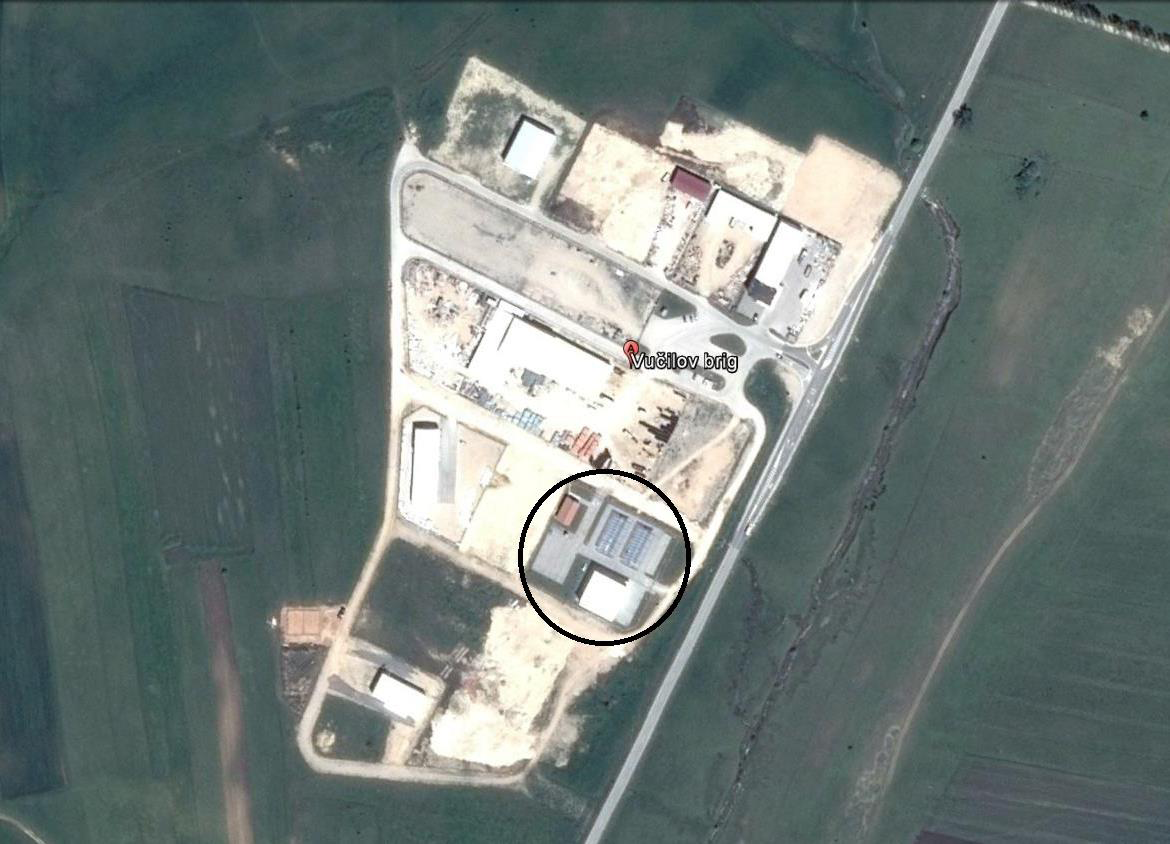 |
| |
|
BA pilot state and plans:
EPHZHB's pilot building in Tomislavgrad has a surface area of 806 m2 and 29 rooms heated and cooled via fan coils. The heating/cooling medium is produced by a heat pump which is in heating supported by an electric boiler. The installations for preparing the building for 3Smart EMS will consist in: introducing digital controls for each room, calorimeters on floor ducts, temperature sensors for return medium on each fan coil, building management system, 50 kWp photovoltaic system, 50 kWh controllable battery storage system and central database on top of which the 3Smart EMS modules will be installed. The 3Smart EMS will encompass all three levels – zone, central HVAC and microgrid.
Current status of the pilot execution and the foreseen timeline:
The first tender procedure for the main project of Design of electrical, mechanical and IT system for the project 3Smart has been unsuccessful due to uncompleted tender documentation. The tender was repeated and successfully concluded. Following the received electrical and mechanical installations project, EPHZHB has launched a public procurement „Heating and cooling system upgrades with the installation of battery storage system and photovoltaic system in business building of JP EPHZHB in Tomislavgrad“ within the 3Smart project. The call is published in the daily newspapers „Večernji list“ at 22 December 2017. Installations are planned to be finished by May 2018.
The 3Smart installations will start with introduction of short-term grid-side management modules as of March 2018. The building-side EMS modules on all three levels will be introduced (transferred from other pilot sites) as of July 2018.
|
|
| |
 |
CROATIAN PILOT
|
|
The Croatian pilot in 3Smart consists of two buildings used by the two Croatian partners in the project (UNIZGFER and HEP) and of the electricity grid that surrounds them (operated by HEP ODS).
About the pilots hosting partners:
University of Zagreb Faculty of Electrical Engineering and Computing (UNIZGFER)
UNIZGFER is the leading Croatian organization in R&D and higher education in the fields of electrical engineering, computing and information and communication technologies. UNIZGFER has already implemented within the ERDF-funded ENHEMS-Buildings project a pilot of zones-level building management on two floors of its skyscraper, whereas the pilot now will encompass this entire building. The living lab implemented on the mentioned two floors within ENHEMS-Buildings relies on the modular design philosophy pursued in this project: the energy management was built upon the existing system as a service which can be easily switched on or off, on software side. When on, all room controllers within floors are centrally controlled by taking into account current weather and weather forecast, as well as by respecting the identified thermodynamic model of the building. When off, the same room controllers operate decentrally as within any other floor. Thus, from the building-side of the planned EMS, one may say that its implemented seed is already present from the ENHEMS-Buildings project on one of the buildings of the Croatian pilot -- that of UNIZGFER. UNIZGFER’s laboratories that participate in this project (Laboratory for Renewable Energy Systems and Smart Grid Laboratory) are in the areas of focus in 3Smart (renewable energy systems, building energy management for efficiency and economically optimal operation, short-term and long-term grid-side management) involved in a series of EU H2020&FP7, SmartGrid Era-Net, ERDF-, national- and industry-funded projects.
UNIZGFER is very proud to lead the 3Smart project and through it create advancement and increase competences in real-time energy management of buildings through advanced control based on mathematical optimization, smart grid management relied on near-real time optimization, and especially in merging these two areas.
Hrvatska elektroprivreda d.d. (HEP)
HEP is a national electricity company which has been engaged in electricity production, transmission and distribution for more than one century, and with heat supply and gas distribution for the past few decades. There is a number of EU-funded projects in which some of the HEP daughter companies participate, such as projects in the area of flood management system (Interreg, E-Flood project) and grid related projects. Within the 3Smart project HEP engages both HEP ESCO company and HEP ODS company. In this way HEP encompasses the scope of the project, both from the side of building energy management and from the side of grid energy management.
Due to the fact that six countries are participating in this project there is an obvious benefit for HEP in exchange of good practice among participating partners, opening opportunities for developing new projects and dissemination of the information and experience beyond the national borders. On the other hand gathering new experiences is extremely important for further development (research and innovation) within HEP daughter companies in the important areas of smart buildings and smart grids.
|
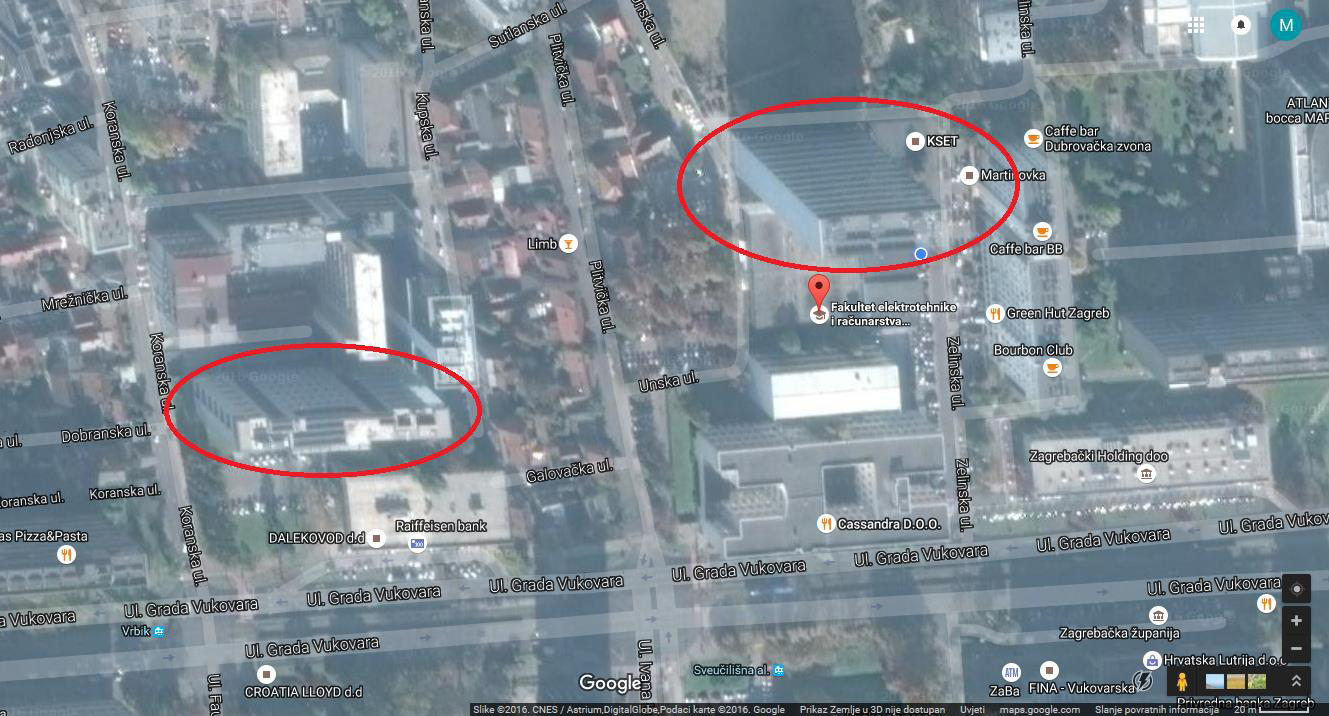 |
|
HR pilot state and plans:
UNIZGFER skyscraper building has a surface area of 10.000 m2, consists of roughly 250 rooms which are heated/cooled via a two-pipe fan coils system consisting of about 370 fan coils. It is already equipped with a 22 kWp photovoltaic system on its roof. It is planned to introduce the zone-level energy management system (EMS) on the entire building, and to merge it then with central HVAC level energy management (heating substation and chiller) and microgrid energy management. For that purpose return medium temperature sensors are installed on each fan coil, calorimeters are installed on each floor, and EMS is built with its database on top of the existing building management system (BMS). Heating substation will be integrated on the BMS. Battery storage system will be also installed as a part of the building microgrid.
HEP headquarters building has a surface area of 8.000 m2 and consists of roughly 320 rooms in which 350 fan coils are used for cooling and radiators for heating. It has already installed 30 kWp photovoltaic system on its roof. Interventions are planned on all three levels of the planned building EMS (zones level, central HVAC level and microgrid level) such that the final state will be similar to that of the UNIZGFER building.
HEP's medium voltage distribution grid supplying the buildings (transformer stations and smart metering equipment) is also the part of the pilot and EMSs of the buildings will communicate with grid-side energy management modules.
Within the project also a case study for smart city up-scale of the EMS will be considered with many buildings managed by the 3Smart EMS and also with smart management of water distribution, electrified light city rail and electric vehicles fleet.
Current status of the pilot execution and the foreseen timeline:
Following the created electrical and mechanical installations project, UNIZGFER has launched a public procurement for the upgrade of its pilot building in order to enable running the 3Smart building-side modules on it. The call is published in the Official Gazette of the Republic of Croatia. The contractor was selected and the upgrade started at the beginning of October 2017. The installation is ongoing – the needed zone-level installations will be finished during January 2018 such that the introduction of zone-level management modules can start as of February 2018. Microgrid-level interventions (introduction of a controllable battery storage system and connection of it with photovoltaic system, weather measurement and forecasting, as well as smart metering) will finish in February 2018. Installations on the central HVAC system level will finish during April 2018. After the transfer of central HVAC level modules and microgrid-level modules performed till September 2018, coordinated management of all three levels and interaction with the grid management will be piloted.

Following the created electrical and mechanical installations project for the HEP building, HEP has launched a public procurement for the Battery storage system within the 3Smart project. The call is published in the Official Gazette of the Republic of Croatia. It is an ongoing procedure and the installations are expected to start at the beginning of 2018 and to finish by March 2018. As of that time, microgrid-level modules for battery management will be introduced in the building. The procurement for the remainder of the building installations is also in progress and these installations are planned to finish by August 2018 (the installations are more complex than in UNIZGFER building since new digital controls are introduced as well as the BMS). Thus in the HEP building the modules for zone-level and central HVAC level energy management will start to be introduced as of September 2018.
|
|
| |
 |
HUNGARIAN PILOT
|
|
The 3Smart pilot in Hungary consists of the headquarters buildings complex of E.ON Tiszántúli Áramhálózati Zrt. (EON) in Debrecen, and of the electricity distribution grid near the building.
About the pilot host:
E.ON Tiszántúli Áramhálózati Zrt. is a subsidiary of E.ON SE. E.ON SE announced that the part of its mission is to facilitate the renewable energy resources and carbon dioxide reduction which means for a DSO within the company group to facilitate the smart grid development, the interconnection technology of renewables, the smart home/building and the grid. Among such kind of technologies can be found the Building Energy Management System (BEMS) interconnection with the grid, usage of advanced technology in the demand side management and its interconnection with BEMS. One important part of smart grid technology is the interconnection and interface of grid and consumer (either home or building) and the technology which is capable of the co-optimization of the grid and home/building technologies/equipment operations. Since 3Smart is exactly focused on creation of a modular solution for energy management in real time through interaction of building-side and grid-side modules, EON's thematic competences and interests are in a perfect match with the project goals. Knowledge transfer and dissemination in terms of BEMS and smart grid technology, BEMS-grid interconnection, demand side management technology development. For the territory it is important to get such kind of technology which can help the grid operation and through the operation it can be useful for cities and consumers as well.
|
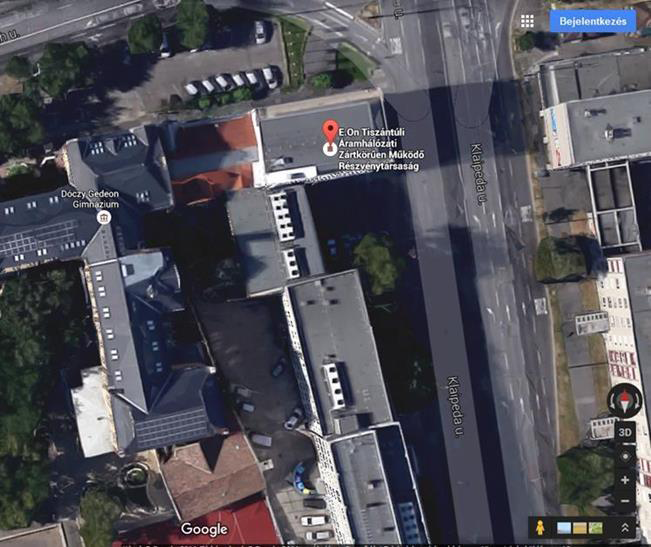 |
| |
|
HU pilot state and plans:
EON's headquarters buildings complex has a surface area of 4000 m2 and consists of roughly 200 rooms heated or cooled mostly via 270 fan coils with a two-pipe seasonal interchange heating/cooling. Heat is supplied from the district heating system while for cooling several chillers are used. The installations for preparation of 3Smart introduction will focus on the central HVAC system improvement in terms of digital control, introduction of calorimeters and return medium temperature sensors on fan coils in selected rooms. On the building microgrid level new installation will be a 20 kWp photovoltaic system with a controllable converter, and also electric heating in a group of rooms in the cellar which will be used as a controllable load in the building microgrid. Preparation of the cooling medium in corresponding tanks by actuating the chiller will also be treated as a controllable load in the microgrid.
The 3Smart EMS will encompass central HVAC level and microgrid level. On the central HVAC level the temperature profile of the foregoing medium towards the building will be computed such that it supplies enough heating/cooling to the zones and optimally uses electricity and heat energy vectors. On the microgrid level electricity consumption of the climatization system will be optimally combined with other loads in the building, controllable loads and photovoltaics production, while interacting with the grid-side modules.
EON's local distribution grid including the local transformer station and smart metering equipment will be also upgraded in the course of the installations. The existing and newly introduced network assets will be optimally managed by the grid-side modules, in particular through their interaction with the building-side EMS.
Current status of the pilot execution and the foreseen timeline:
Following the received electrical and mechanical installations project, the contractor was selected and the PV installation is already completed. The Hungarian pilot building is thus operating already as a „prosumer”. The installation of the server is ready, the software development is in progress, and the installation of the sensors/measurements started in December and will be finished during February 2018. For grid measurement EON has developed a new technology to ensure 1 minute resolution data for the EMS system. This technology is in test mode by EON.
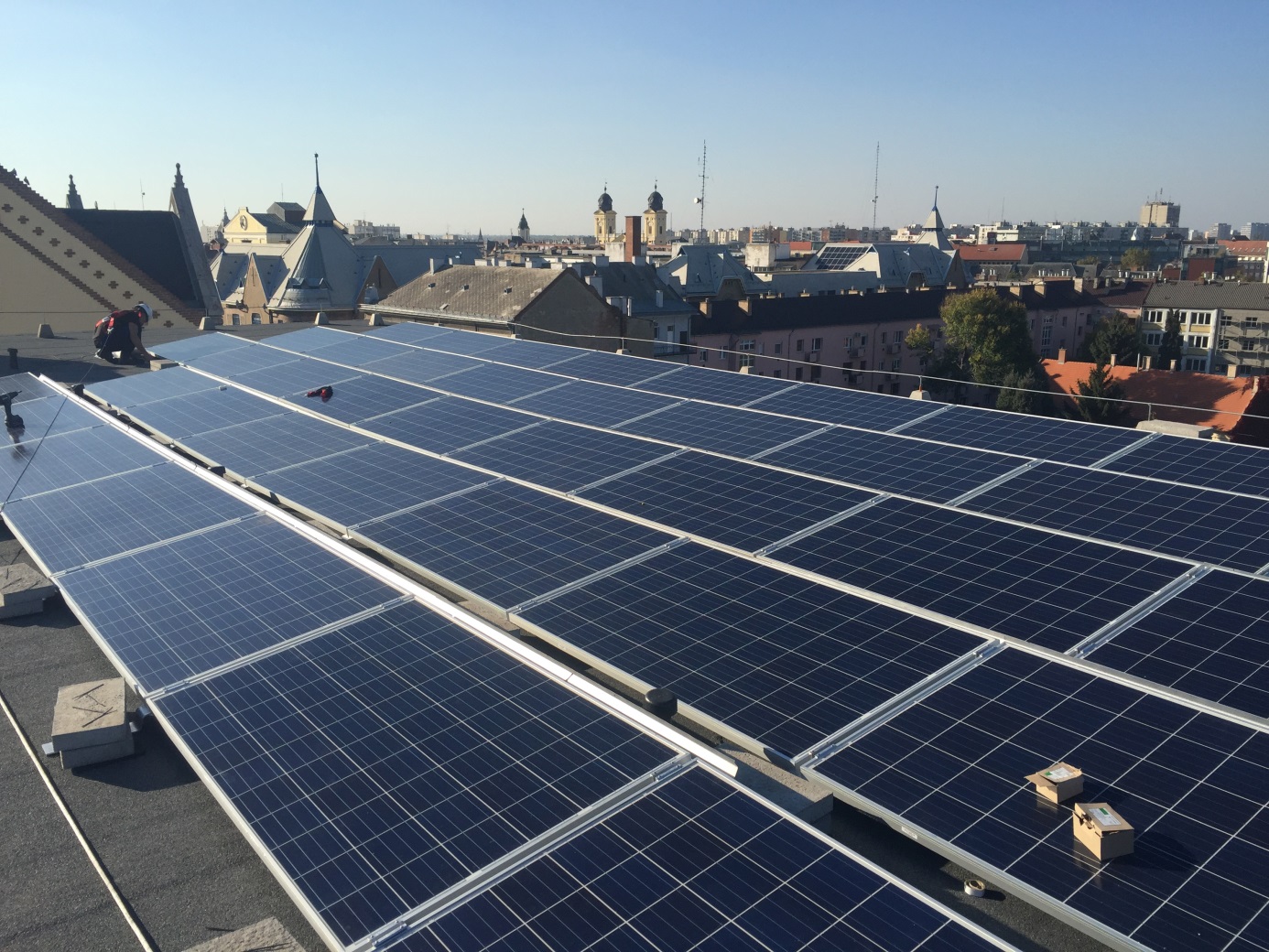
The first-time deployment of the 3Smart EMS on the pilot will be performed with central HVAC level modules, and it will be performed during March 2018. As of July 2018 microgrid level modules of the building-side EMS and also grid-side EMS modules will be added.
|
|
| |
 |
SLOVENIAN PILOT
|
|
Slovenian pilot consists of the primary school and sports centre buildings in Idrija (owned by the Municipality of Idrija) which share local heat supply from the gas boiler station owned also by Idrija that supplies a number of other nearby buildings. The pilot consists also of the local electricity grid surrounding the buildings (operated by Elektro Primorska).
About the pilot buildings host:
Municipality of Idrija has in recent years developed several action plans to achieve its goals for sustainable development of the local community: Idrija – Smart Community – Development strategy of the municipality according to the model of smart communities and Innovative sustainable development strategy of the Municipality of Idrija.
Project 3Smart is fully in line with municipality’s attempts towards a smart community – 3Smart project is an important part of its smart community strategy – pillar Energy. Other benefits for Idrija and the nearby territory are:
- optimization of the use of electricity and heat in the pilot buildings,
- self-sufficiency in electricity and heat increased,
- local policies supported for further improvement,
- models for electricity distributors developed and changes of legislation suggested,
- the project will represent an example of good practice for the municipality in the management of other public buildings,
- researched will be the influence of co-generation of electricity and heat energy on energy prices and on rational use of energy,
- networking with actors working on the same issues, new experiences and knowledge, collaboration with research and development organizations,
- project will encourage the development of entrepreneurial sector,
- public awareness on the issue will be raised.
|
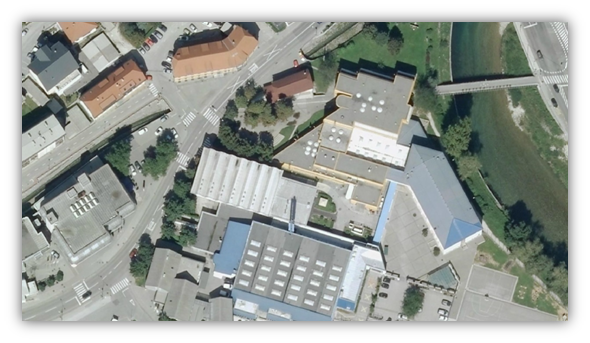 |
| |
|
SI pilot state and plans:
Idrija's school building is heated with radiators system supplied from the local heating grid. Zone-level EMS will be enabled through controllable valve actuators on radiators, room digital controllers, calorimeters and sensors of return medium temperature from each radiator. Central HVAC system level will include temperature control of the supply medium towards the radiators system. Idrija's sports centre building is like school heated with radiators supplied from local heating grid with analogous zone-level and central HVAC level EMS introduction plans.
On the microgrid level in Idrija a mix of heat and electricity supply will be considered with photovoltaics, CHP cogeneration unit and hot water boiler supplied with both heat and electricity which will be treated as a controllable load. Idrija’s photovoltaic system that is newly introduced will have 30 kWp power capacity and the gas-driven CHP unit will have 50 kW of electrical power and 100 kW of heat power.
All the improvements introduced will be integrated in a 3Smart database which will be read by 3Smart EMS modules and through the database also commands for the building systems will be issued by the modules. Smooth transition will be enabled to the mode in which the 3Smart EMS coordinates the building through all three levels and interacts with the grid-side modules, and also from this mode back to the classical decentralized mode of building system control according to current building automation standards. ElektroP's local electricity distribution grid supplying the buildings (transformer stations and smart metering equipment) is during 2018 going to be improved with additional metering equipment to support improved grid management procedures introduced via 3Smart.
Current status of the pilot execution and the foreseen timeline:
In May 2017 an external expertise company was selected to prepare installation projects, which have been completed at the end of summer 2017. In September 2017 public tenders have been launched for the upgrade of Idrija pilot buildings in order to enable running of the 3smart building-side modules on it. One public tender aimed at selection of a contractor for the implementation of PV plant and connections on low voltage grid distribution system and at installation of CHP and connection to the 3Smart database. The second public tender aimed at selection of contractor for installation of the remotely controlled valves on radiators, sensors and establishing functional informational grid. The public tender for implementation of installation of CHP and connection to database was not successful and will be repeated at the beginning of 2018.
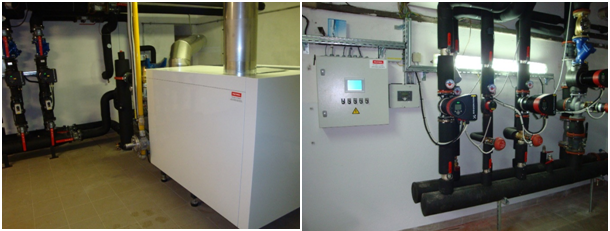
In the Slovenian pilot first grid-side management module for long-term planning of the grid will be installed. All installations in the buildings are planned to be finished by June 2018 and then building-side modules are planned to be introduced as of July 2018. Zone-level and central HVAC level modules will be first tested as the heating season 2018/2019 starts.
|
|
| |
 |
project partners and ASSOCIATED STRATEGIC PARtners
|
| |
|
|
Prof. Mario Vašak, Ph.D.E.E.
Department of Control and Computer Engineering
Faculty of Electrical Engineering and Computing
University of Zagreb
Unska 3, HR-10000 Zagreb, Croatia
tel. +385-1-6129-821 fax. +385-1-6129-809
mario.vasak@fer.hr
|
Kristina Radoš Cvišić
Financial and communication manager
Faculty of Electrical Engineering and Computing
University of Zagreb
Unska 3, HR-10000 Zagreb, Croatia
tel. +385-1-6129-591
kristina.rados-cvisic@fer.hr |
|
|
|
|
| |
|
If you have received this newsletter, you have been included on one or more of the Danube Transnational Programme/projects postal mailing lists. We are committed to respect and protect the privacy of personal data collected. We regard your personal data as confidential information and will never communicate it to third parties. Your personal data are used mainly for the express purpose of receiving the newsletter. Your mailing details may also be used by the DTP and its projects for information and dissemination purposes strictly related to the programme and its projects. If you prefer not to receive more of this newsletter and your data not to be used for dissemination purposes, you can unsubscribe by sending a reply email.
|
|
|
|
|
|
